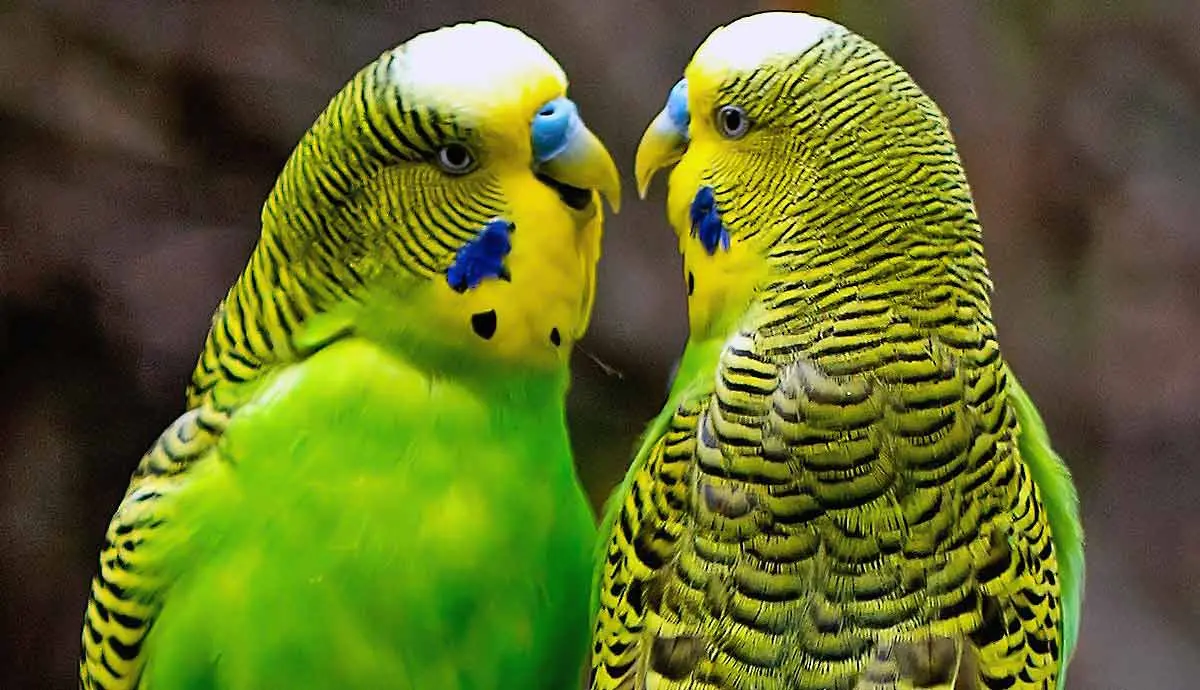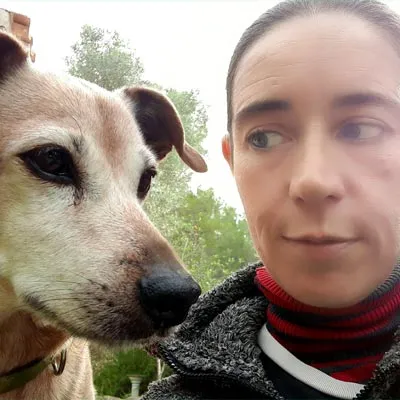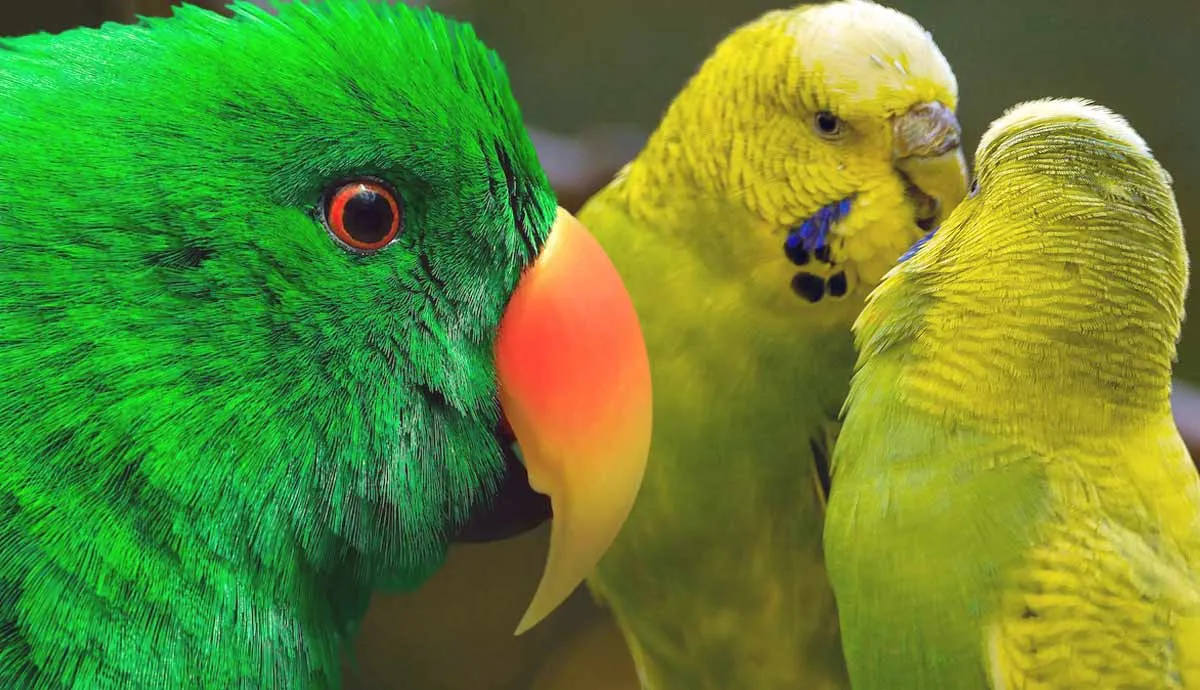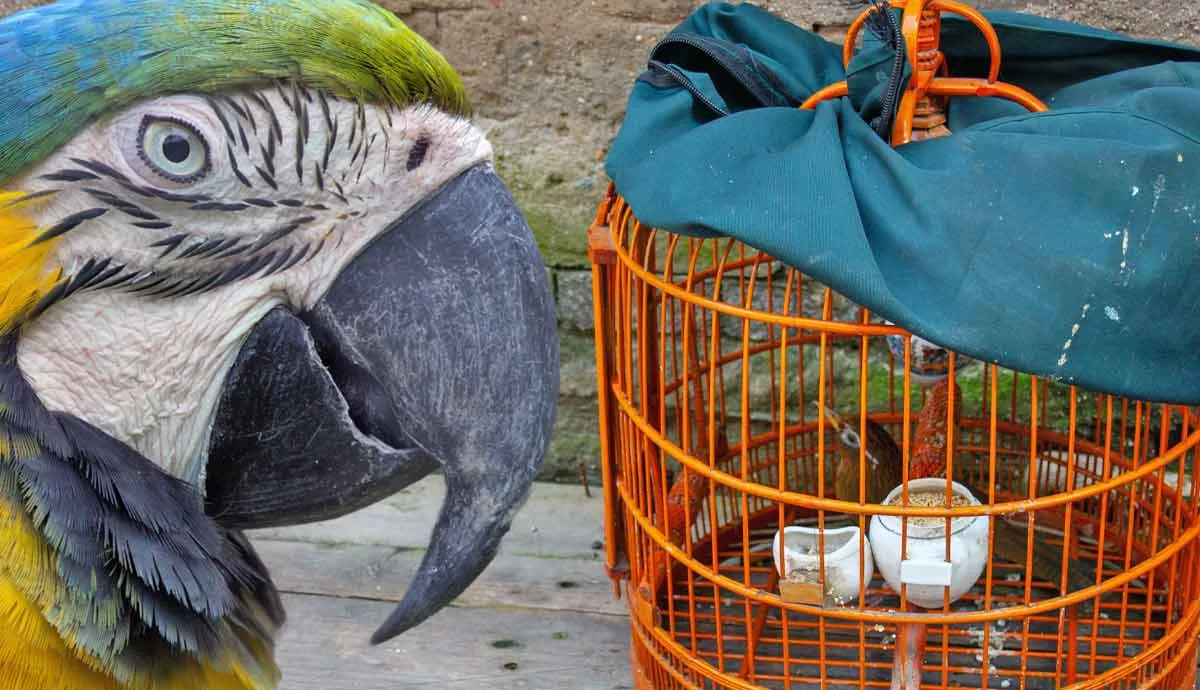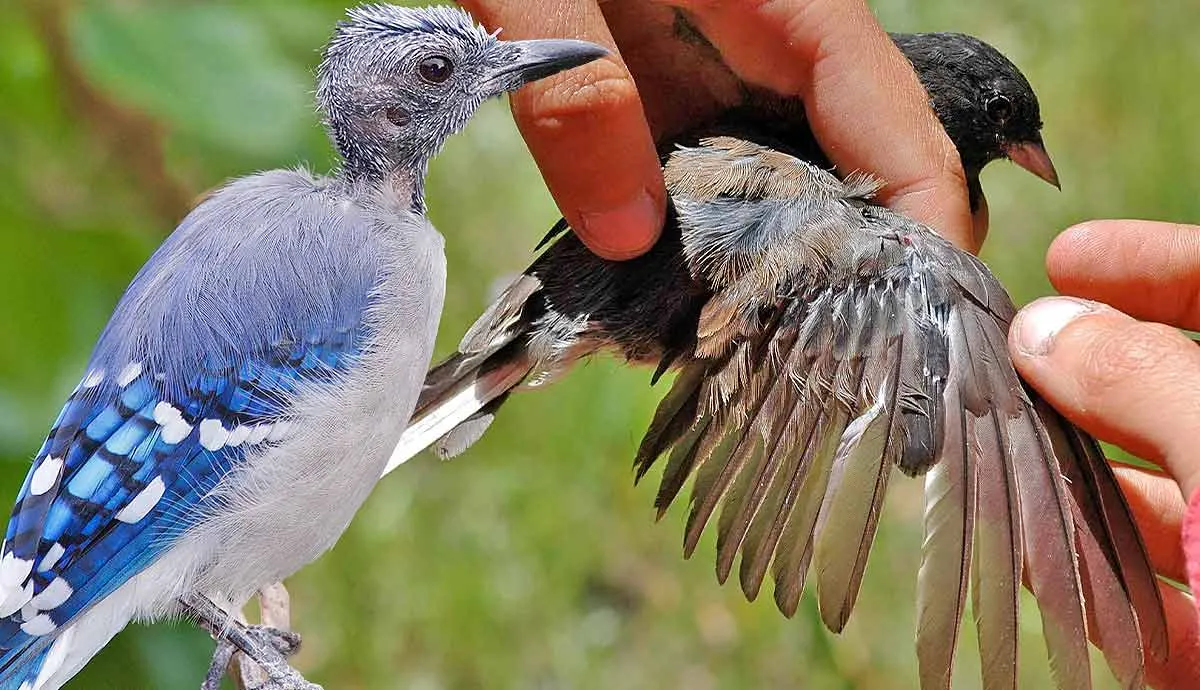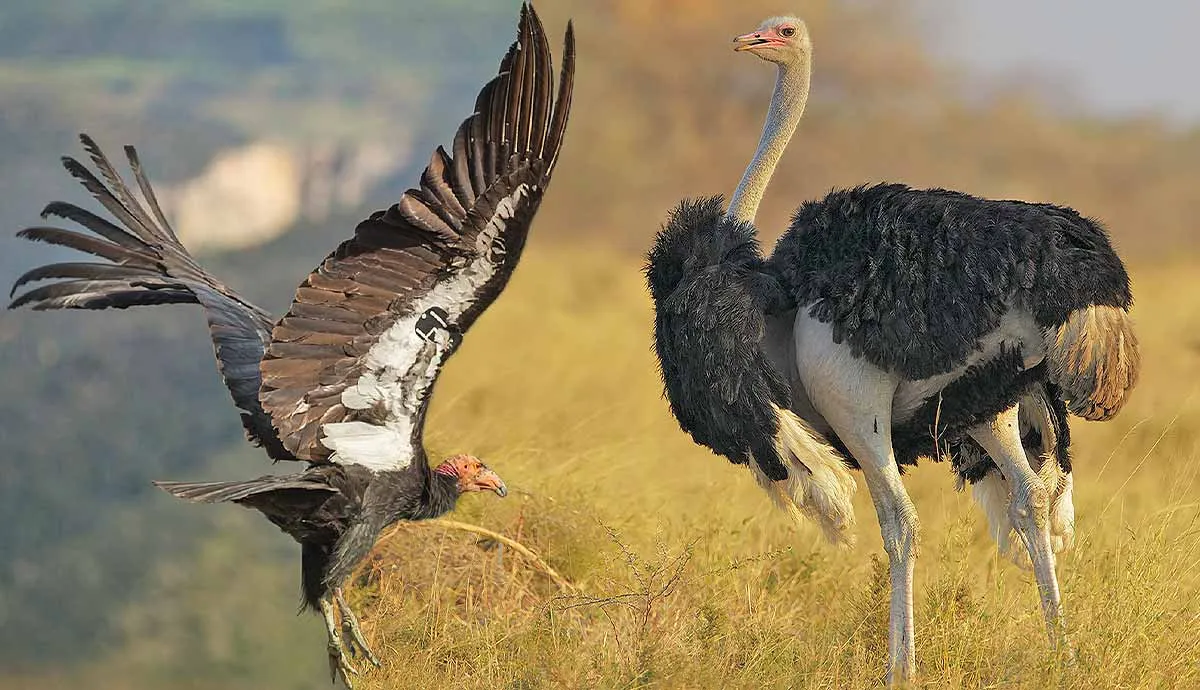Budgies are also known as parakeets or budgerigars and are small, colorful, friendly birds that you can find in homes all across the globe. They’re one of the smallest pet birds, but what they lack in size, they make up for in character. That’s why many people choose them as pets. If you want to know more about these friendly little creatures, take a look at my list of 6 interesting facts about budgies.
1. They’re Fantastic Talking Birds
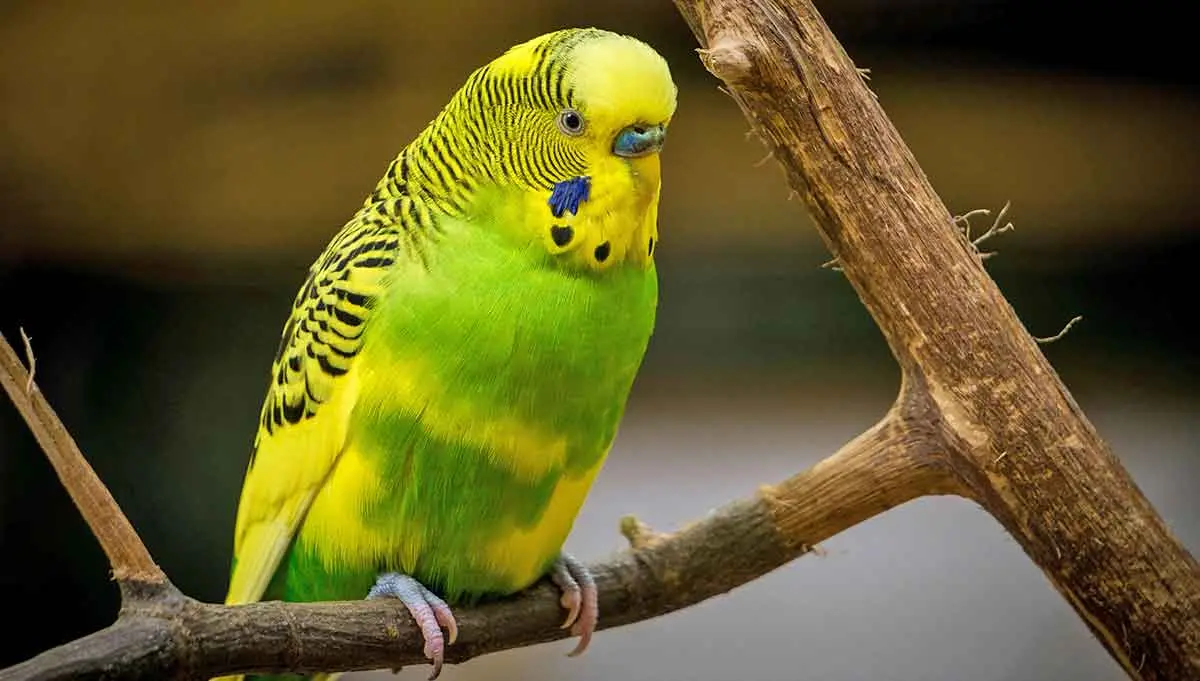
Budgies are one of the best talking pet birds and can learn hundreds of words and phrases and mimic many sounds. But you should never buy a bird just for its talking abilities because there’s no guarantee that even the best talking birds will talk. If you get a pet bird, it must be because you want a companion and not a novelty.
Budgies aren’t the easiest birds to teach how to talk. You must invest a lot of time and effort into training them. The best way to train them is with repetition. Pick one word or phrase to start and say it over and over again until they repeat it. The World Record holder for the largest vocabulary of a bird was a budgie named Puck, who knew a whopping 1728 words.
Most budgies enjoy human interaction and training - and males are generally better talkers than females. Budgies are easy to distinguish between the sexes because the area above a male's beak is blue, and the female’s is brown. Finger-trained birds usually talk better because they’re more relaxed and comfortable with humans. So, for the best chances of teaching a budgie to talk, get a young bird under 12 weeks and begin with finger training.
2. They’re Good for Beginners

Budgies are perfect for first-time bird owners because they’re hardy, adaptable little creatures and don't have complex care needs. Of course, they still need as much care and attention as any other bird, but they are generally easier to maintain. If you train them from a young age, they are also incredibly laid back and easy to handle. Choose a hand-reared one if you don't feel confident training a young budgie. Untrained birds can be unpredictable and sometimes aggressive, so aren't suitable for beginners.
Being such agreeable characters - budgies are the ideal pet option for children. They are friendly and affectionate and enjoy being with people. That said, you must supervise children when they handle budgies and educate them about the correct way to handle birds and their care needs. Budgies need fresh food and water daily, bird enrichment toys, regular human interaction and a weekly cage clean.
3. Budgies are One of The Most Popular Pet Birds
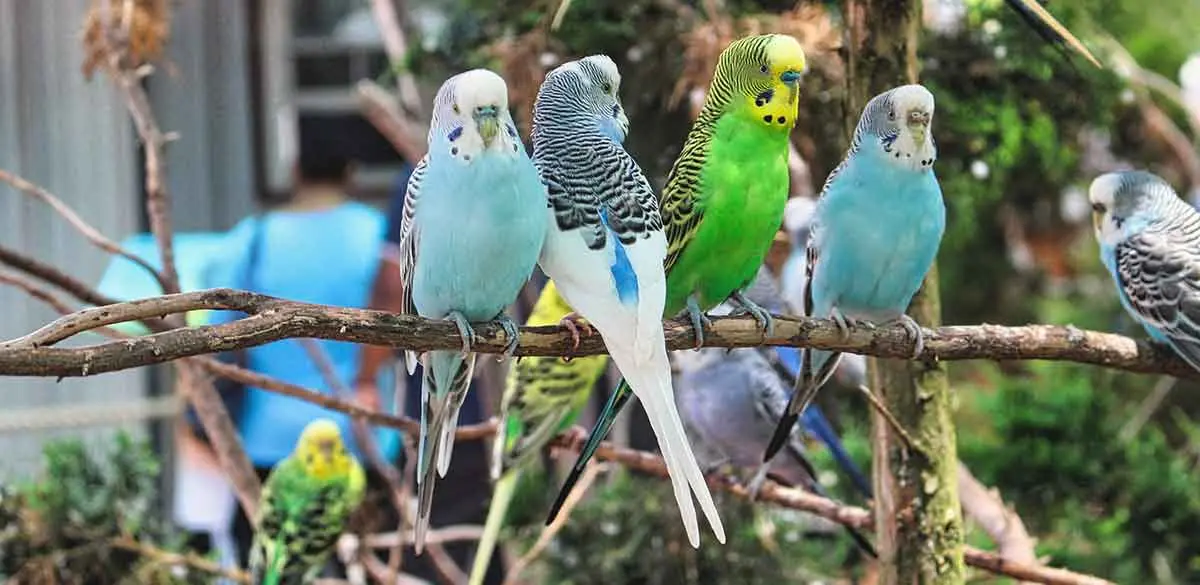
There are many reasons why the humble budgie is one of the most popular pet birds and also one of the most popular pets. They are excellent companions and are popular with new and experienced bird owners alike. There’s a thriving community of Budiriagar enthusiasts - who enjoy taking their birds to shows.
When you understand this cute little bird's character, it’s easy to see why they are so popular. They are easy to train and will spend hours sitting on your shoulder or hand. Also, if they master talking, they will lovingly greet you when you enter the room and spend hours happily chatting with you.
Another reason budgerigars are one of the world's most loved pets is because, in terms of bird care, they're easy keepers and are also inexpensive to buy. Unlike some parrots, which cost thousands of dollars, a budgie start-up kit won't break the bank.
4. They’re Native to Australia

Budgerigars are native to Australia and predominantly live inland on the west side of the Great Dividing Range. They are just one of many unique birds native to Oceania. They are abundant in the wild, and farmers consider them a pest in some areas, so there’s no concern about their conservation status.
The word Budgerigar comes from the Gamilaraay Aboriginal word Betcherrygah, which means good food. We don't know if this is because the natives ate them or whether a budgie flock indicated areas of good food. Hopefully, it means the latter!
A British-born Zoologist, George Shaw, was the first to document these colorful parakeets in 1805. In the 1850s, people began breeding them in captivity and started selective breeding in 1870 to produce the popular budgie colors you see today.
5. Budgies are Parakeets
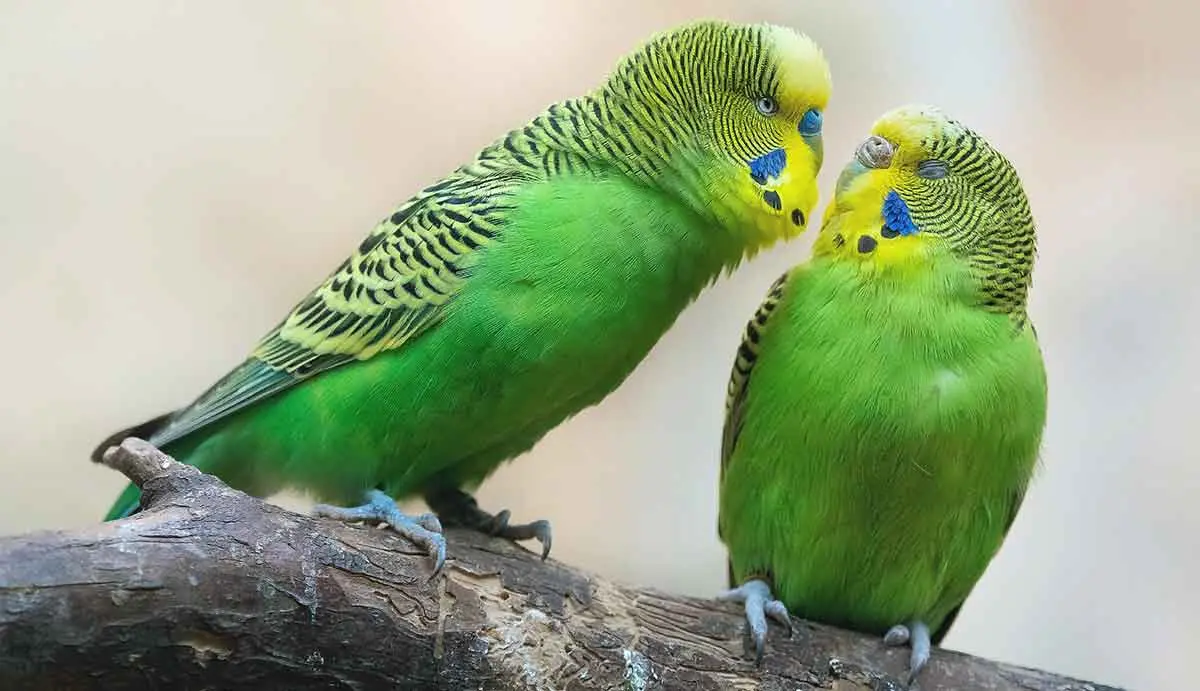
Parakeet is the name for a small, colorful, seed-eating parrot with a slender build and long tail. Budgies are a type of parakeet, but there’s confusion around the subject because, in some places, budgies are called parakeets instead of budgies.
While budgies are a type of parakeet, they aren’t the only ones, and the word parakeet is interchangeable. There are over 100 small parrot species, including the Indian Ringneck Parakeet, Grass Parakeet, Monk Parakeet, Mustache Parakeet and Quaker Parrot. There’s a saying in the avian community: all budgies are parakeets, but not all parakeets are budgies.
6. Wild Budgies Are Nomadic
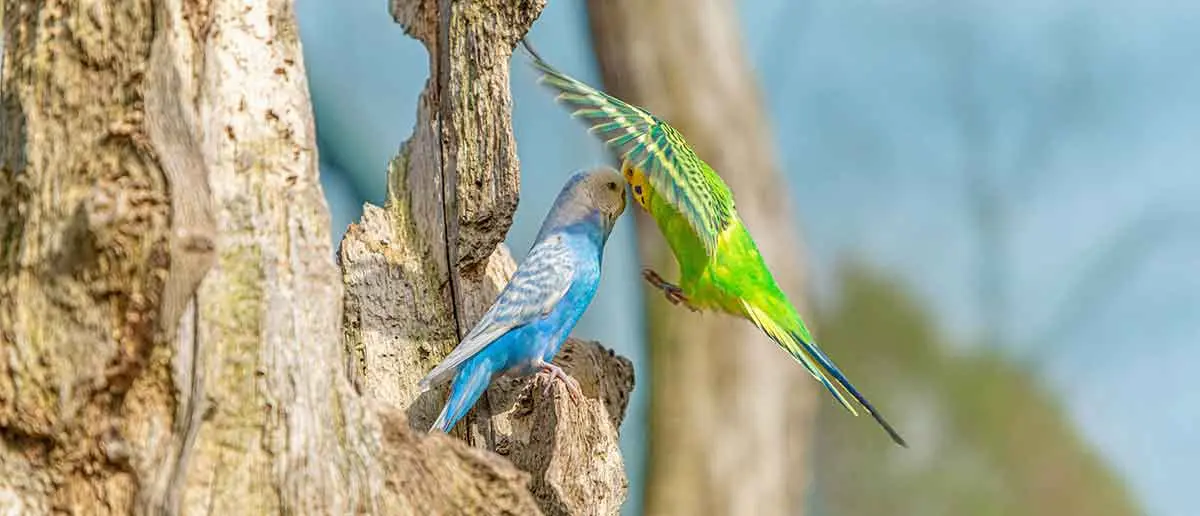
Wild budgerigars are nomadic and spend their lives roaming from pasture to pasture. They travel incredibly long distances to find food, up to 25 kilometers daily. Budgies live in flocks of between 3 and 100 birds and can number thousands around good feeding areas. They’re highly sociable creatures and love preening and interacting with each other.
Budgies live in grassy savannah and woody areas and need lush habitats because they must drink 5.5 percent of their body weight daily. Not to mention that they love foraging on the insects and seeds found in green areas. Like most birds, budgies mate for life, and females lay around eight eggs in a clutch, which takes 18 days to hatch. The male will supply food to the nest until the baby budgies leave at 35 days old.
